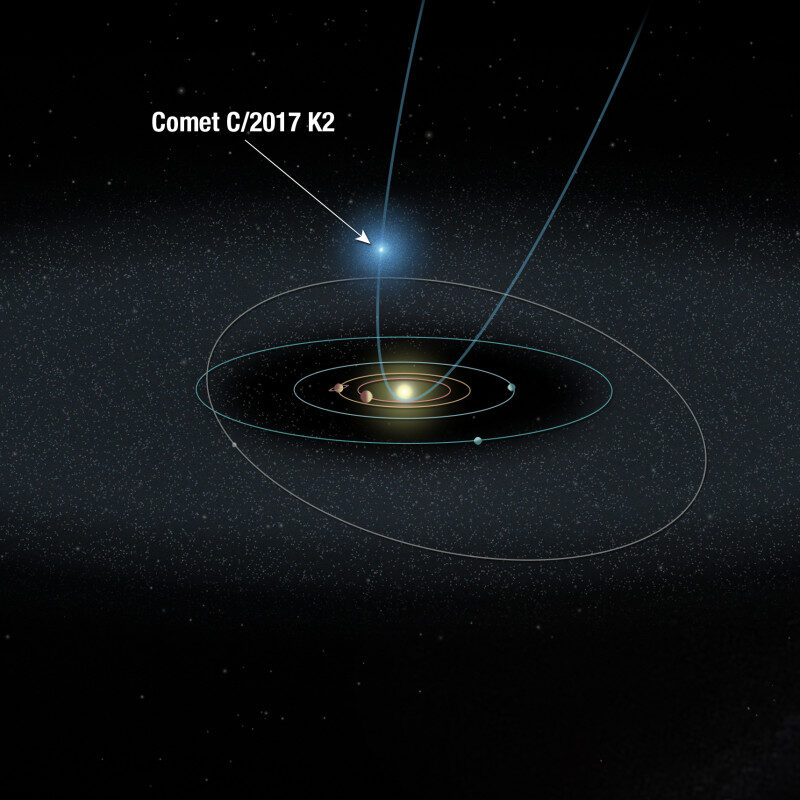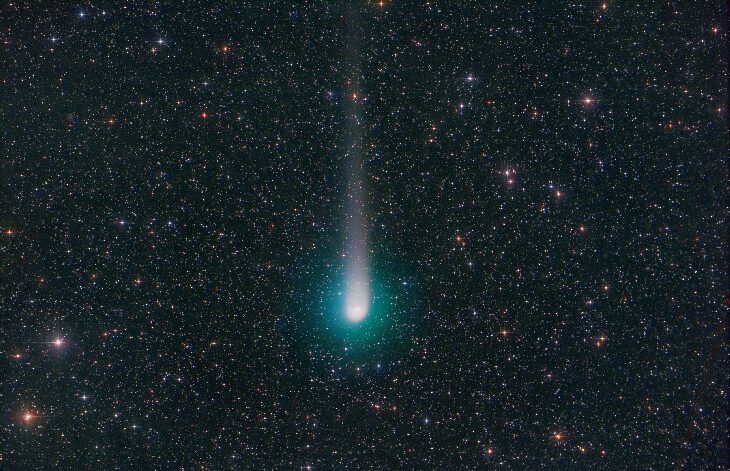"This is a 22-minute exposure with my 16-inch telescope," says Jaeger. "The comet was about 9th magnitude."

The comet will make its closest approach to Earth (1.8 AU away) on July 14th, brightening to 7th or 8th magnitude. This is too dim to see with the naked eye, but an easy target for backyard telescopes. Comet K2 may be found high in the midnight sky in the constellation Ophiuchus. Resources: sky maps, 3D orbit, light curve.
More Images: from Roland Fichtl of Engelhardsberg, Germany; from José J. Chambó of Valencia, Spain; from Fritz Helmut Hemmerich of Alhama de Granada, Spain; from Alessandro Bianconi of Dolianova, Italy; from Paul Robinson in the Sierra Nevada mountains of California; from Lionel Majzik of Hakos, Khomas, Namibia




Reader Comments
to our Newsletter